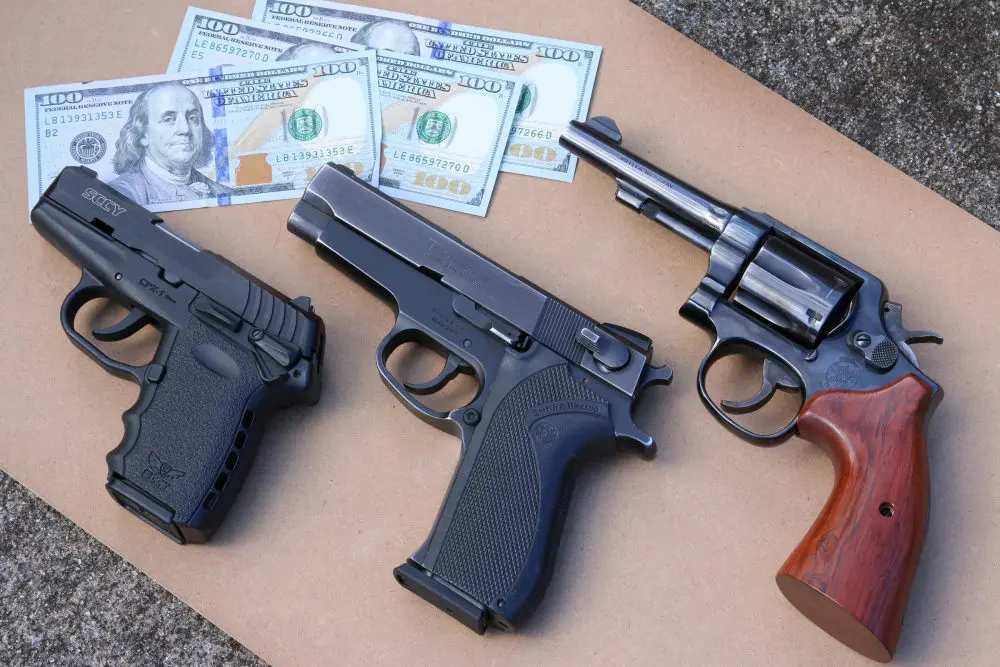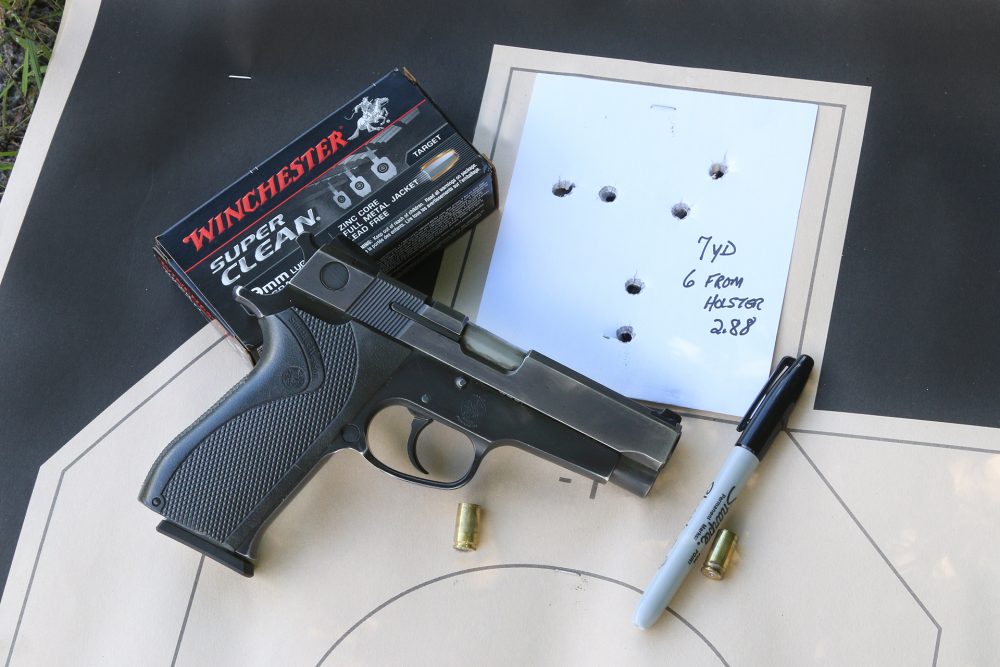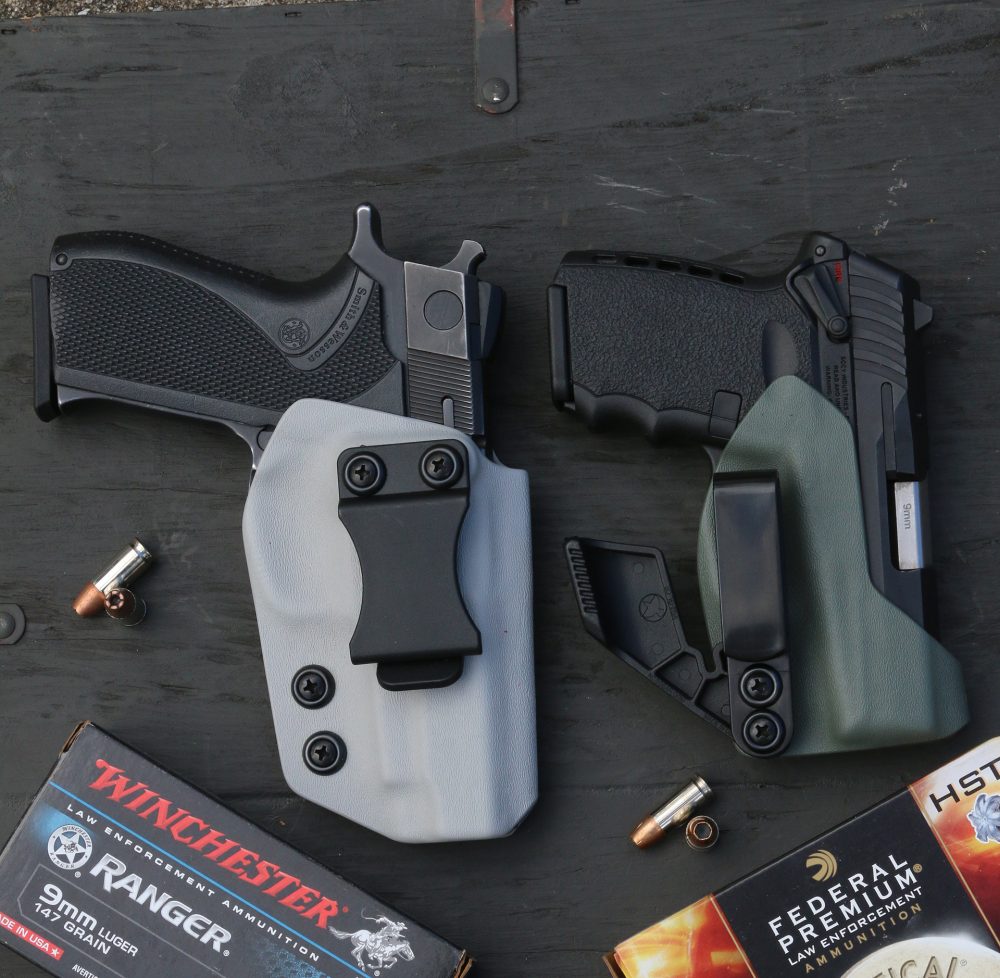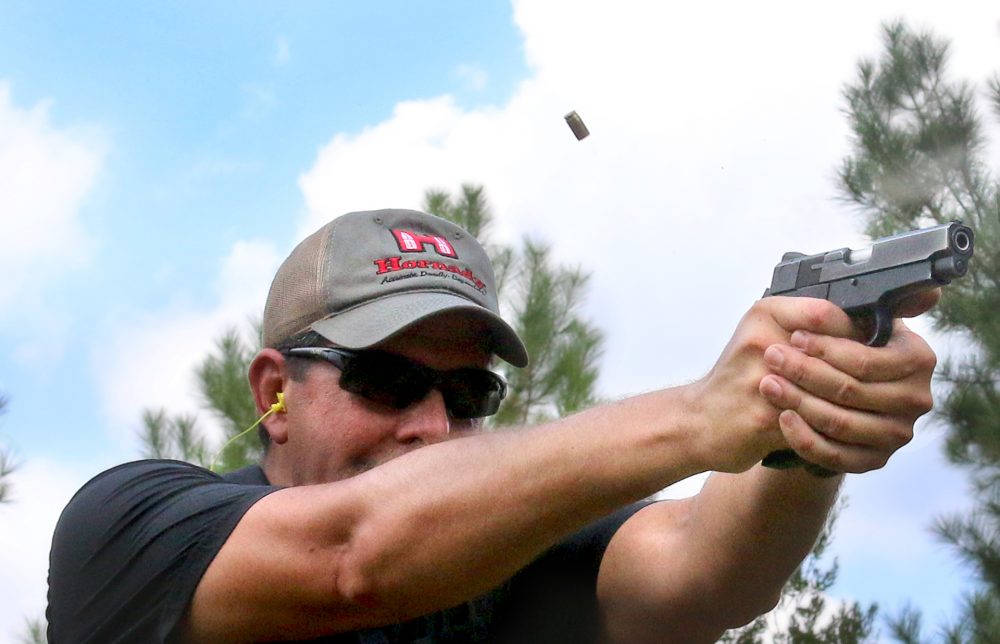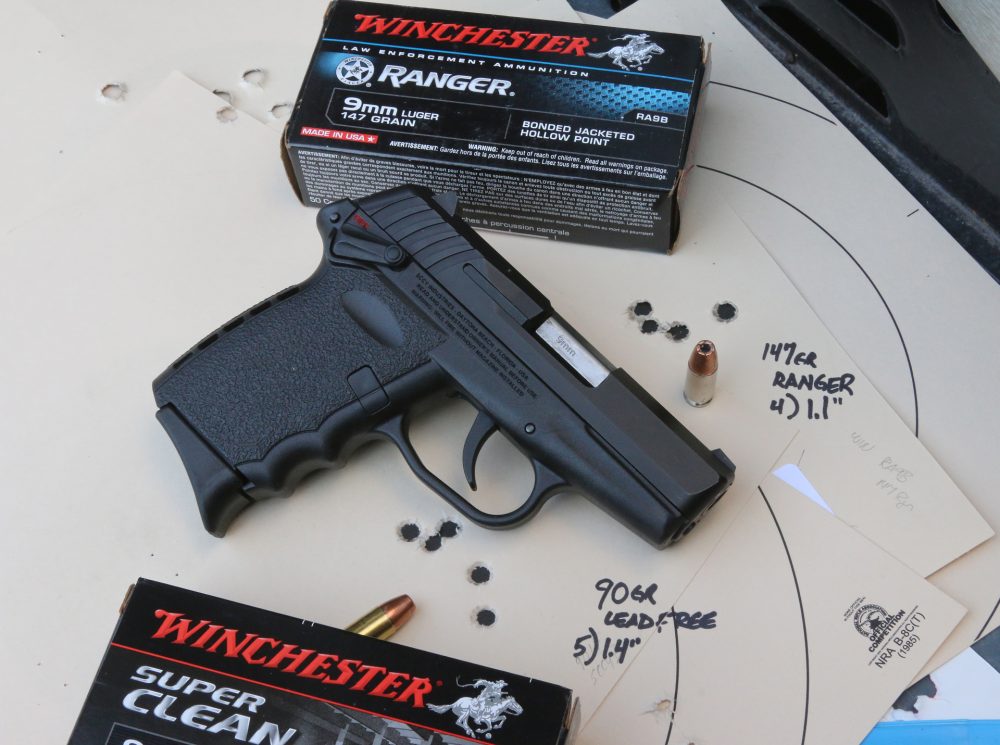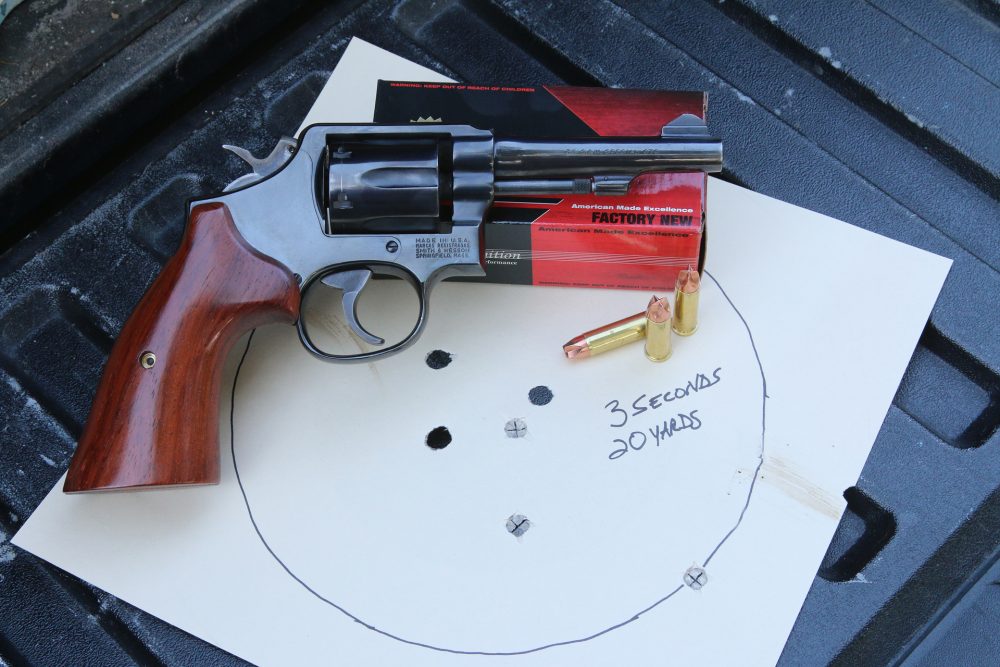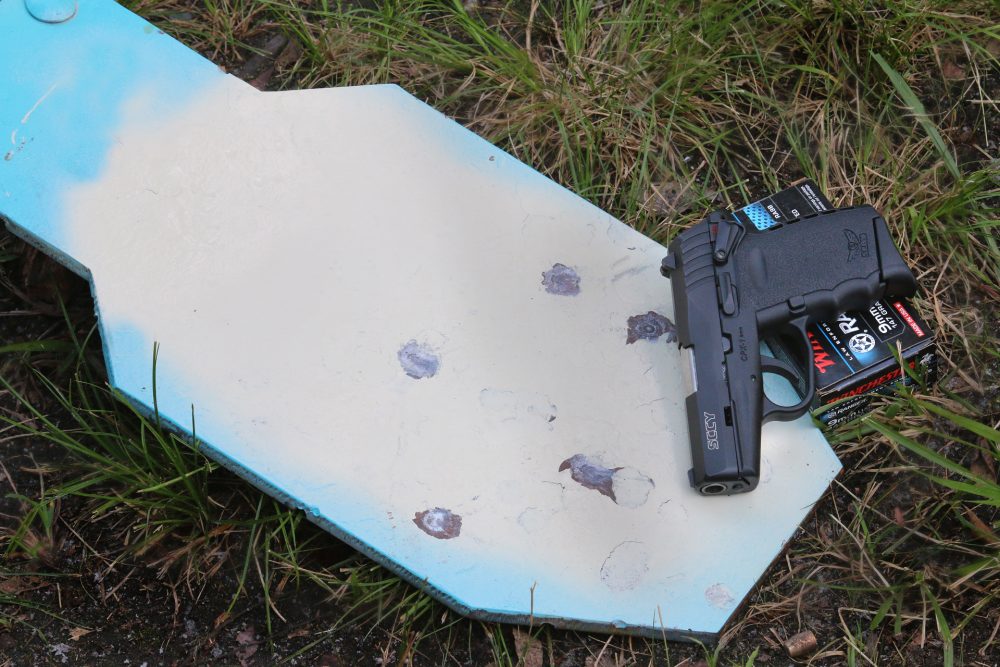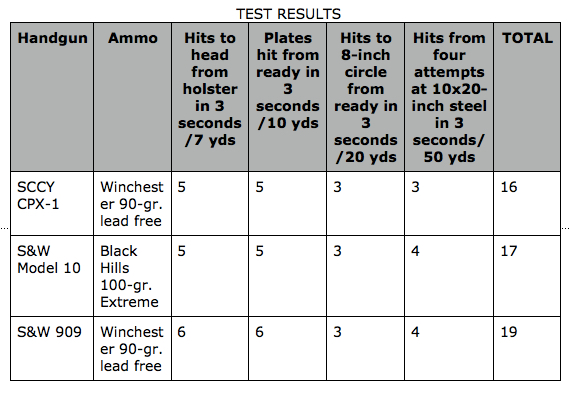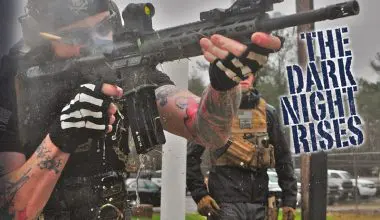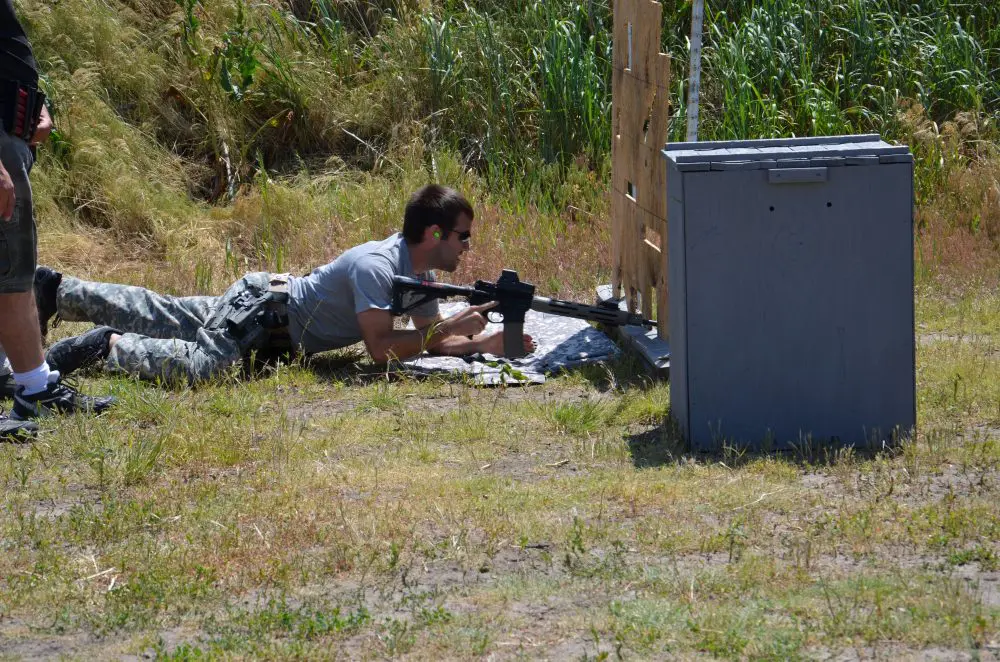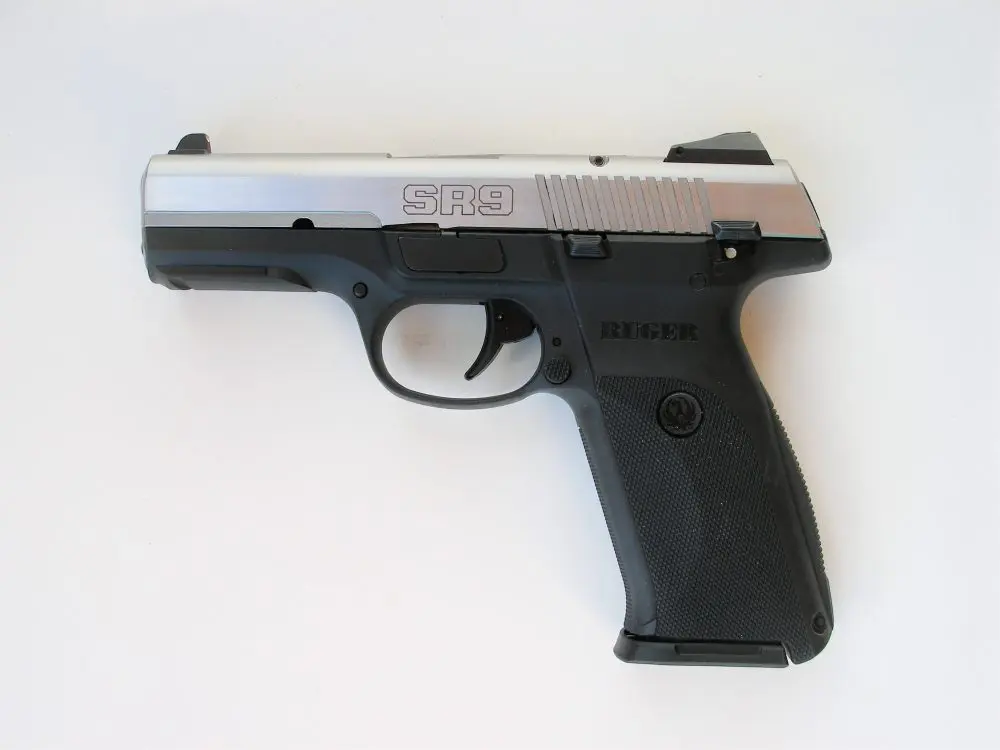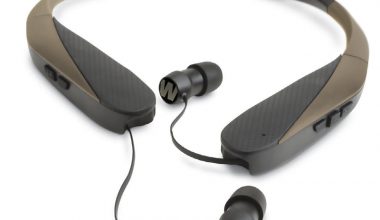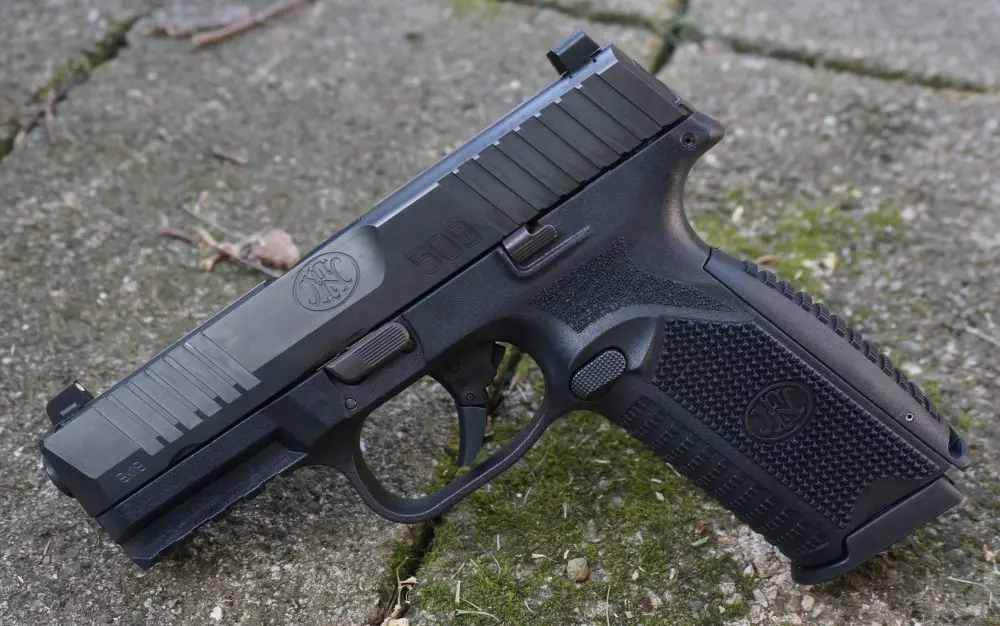How much handgun performance can you get for $300? We tested a SCCY CPX-1, 3rd Gen S&W 909, and a S&W Model 10.
Poking around the Internet, a new shooter stands a high probability of coming away with one of two impressions. First that he or she is best off with a 1911, but only certain makes and models will do, and those only after sending it off for sundry modifications and reliability work.
If our prospect avoids that line of logic and several months’ rent expense, they are still likely to be convinced they need the latest striker-fired polymer sweetness … but only after a month’s grocery cost in upgrades and, better yet, milling the slide for an optic that costs more than the base gun.
There is understandable angst when the prospective buyer counts their mad money and comes up well short of the outlay required for these enthusiast pieces. I had a random curiosity as to what type of service-caliber protection I could find for $300 or less and set out on the hunt. I discounted the very low end and leave that for others to ascertain worthiness.
But I did easily find three representative examples to explore the concept: the SCCY CPX-1 9mm, a Smith & Wesson Model 10 .38 Special revolver, and a moderately used Smith & Wesson Model 909 3rd Generation 9mm.
One test was number of hits to the head from the holster in three seconds at seven yards. S&W 909 consistently stacked six hits.
Table of Contents
SCCY CPX-1
I knew very little about the SCCY, but happened to see one in the case at Guerrilla Armament in Jacksonville, North Carolina for under $200. It was a like-new pistol that someone had traded in, rather than brand new, which seem to run about $270 in many shops. Curious, I picked it up. In overall feel, fit and finish, it seemed to well exceed some similarly styled autos in that general price bracket.
The pistol is a subcompact 10+1 9mm that weighs a super-light 15 ounces empty and runs a double-action-only trigger to drop its spurless hammer. The grip is hand-filling and comfortable for its overall small size. The double-action pull ran about eight pounds across a fairly short travel and was remarkably smooth.
The combination of grip “feel” and trigger quality made the decision easy. I was definitely buying at that price, and with no haggling. I think the little gun is plain ugly, but well aimed at the first-time buyer. It has a pretty remarkable warranty backing it, so I was off to the races.
Holster options are very slim for both SCCY and 909. TG Holsters made high-quality custom IWB models to author’s specs for each.
S&W MODEL 10
Many millions of Smith & Wesson Military & Police .38s have been turned out in the 100+ years they’ve been around. It is the quintessential police service revolver and probably has more cumulative service time than any other handgun in history.
Smith gave it the number 10 when it began numbering its models in the 1950s, but the design is functionally identical from 1899 to the present day. I’ve previously reviewed a police trade-in special (POLICE TRADE-IN BONANZA: Used Service Weapons Find New Life, November 2015 S.W.A.T.), but this beauty was a find from a tiny shop on the side of a rural highway.
The serial number puts it in the 1980s and it was probably fired very little if at all. The cylinder had the tells of being left sitting in some location, likely a drawer, that had allowed dampness to eat the bluing off where it rested, but it was otherwise pristine.
The trigger in both single- and double-action feels stock, but like all the parts, it went together in perfect harmony. $300 even, and out the door I went. Finding a $300 K-Frame can be somewhat regional and may take a little patient shopping, but in many areas it isn’t hard.
Four tests all use three-second time limit to frame performance in practical limits.
3RD GENERATION S&W 909 9MM
Smith & Wesson had a virtual stranglehold on the law enforcement market from the 1950s onward, so when departments began to switch to autos in numbers, it was natural for many to choose the 3rd generation pistols. They still serve in a few places in limited numbers.
The value line was S&W’s last-ditch effort to combat the polymer Mongols that overran so much of the market in the 1990s. The simple economics are that a polymer striker-fired pistol is inexpensive to make, and the Glock was beating S&W on price so badly that Smith had to counter with something. That begat the 909 (single stack), 910 (double stack with “ban” 10-round-only mag), and 915 (double stack 15 rounder).
These were no-frills 3rd gen guns that had slab sides rather than contours, flat finish, single-sided safety levers, and substituted some polymer parts for machined ones. It is a rare day that you can’t find one of these on the auction sites for under $300 in serviceable condition.
I found the less-common 909 on auction from the Woodlawn Boys in Alabama, a specialist in bringing collectibles to market. This Smith was an odd fit for the high-end auction grouping at the time, and with modest wear it wasn’t getting many bids. I’d been interested in trying out a single-stack Smith, so was thrilled when the pistol went to me for $280.
Now it was time to compare the three bargain blasters.
SCCY CPX-1 shot better groups than many autos at twice its price.
IMPRESSIONS
The SCCY got off to an inauspicious start. Every couple of rounds, the pistol would fail to extract the fired case and tie itself up in a pretty nasty double-feed. The gun snobs among S.W.A.T. readers are undoubtedly tut-tutting and confirming their high-end bias. However, a call to the customer service line quickly confirmed that the pistol was in a problematic serial number range, and SCCY had a replacement slide and barrel in my hands within two days.
They knew me only as a customer with an issue, not a writer at work, so I am confident this is the typical experience. The replacement slide and barrel ran without any issues across the rest of the shooting. Not only that, but the little lightweight also stacked up 25-yard groups with both Winchester’s new 90-grain lead-free flatpoints and Ranger 147 JHPs that would do any pistol proud at 1.4 inches for five and 1.1 inches for four, respectively. The CPX points very well and recovers out of recoil well despite the muzzle flip that comes with the territory at such light gun weight.
The Model 10 was as well balanced, simple, and dependable as the classic is known for. This particular wheelgun proved to be especially accurate with numerous loads, overlapping wadcutters into just over an inch at 25 yards. I tried the new Black Hills 100-grain Xtreme fluted solids in the fixed-sight Smith and printed a two-inch group a few fingers’ width low at distance with light recoil.
The surprise in initial handling was the 909. It felt remarkably good in a firing grasp and was relatively light at 27 ounces. The DA trigger was well broken in and buttery smooth, and the single-action broke crisply. The controls are well placed and the auto is thin at only .92 inch across its width; svelte in a Glock world. The 909 consistently shot acceptable 2.75 to 3.25 groups with all loads, but I haven’t yet found a knothole combo.
Venerable Model 10 with 20-yard target showing three hit groups from Winchester wadcutters and new Black Hills Extreme load with its distinctive cuts.
TESTING, TESTING
I decided on the drills before ever firing a shot from the test guns. For comparisons to be meaningful, context is everything. I wanted to see what these pieces were capable of but without getting overly distracted with, as my good friend Pat Rogers used to say, “Inconsequential increments.”
I wanted to take a situationally relevant time span, say the oft-quoted three seconds of the average confrontation, and get a sense of what these budget blasters would do inside of it. I chose four distinct tests, and the score would be the maximum possible hits (a shooter’s MPH) in each test’s three-second limit.
Test One: Maximum number of hits to a standard IDPA head box from the holster in three seconds at seven yards.
Test Two: Maximum number of eight-inch steel plates hit from the ready in three seconds at ten yards.
Test Three: Maximum number of hits to an eight-inch circle from the ready in three seconds at 20 yards.
Test Four: Number of hits out of four attempts on a 10×20 Defense Targets reduced steel silhouette at 50 yards, from the ready in three seconds.
The tests span close, mid, and distant shooting scenarios in the same compressed timeframe. The aggregate hit count across all four strings is a very good quick comparison of how well a particular handgun performs for a shooter overall.
Looking over the results in the table (at bottom) you can see that none of the handguns failed to deliver—in fact they did quite well. The SCCY lagged slightly behind the others but out-shot my expectations with it being such a light subcompact gun.
All test guns shot well out to 50 yards on Defense Targets steel, with even subcompact SCCY ringing three of four attempts.
The Model 10 results were satisfying and consistent. Something about a good vintage K-Frame brings out solid shooting. The smooth wooden grips on this one are better than the stock Magnas found on most 10s, but maybe not as conducive to fast follow-up shots in the drills as a cheap second-hand pair of Pachmayrs might have been.
Still, once about every third run on the plate rack, I could squeak all six plates in under three seconds, which I was thrilled with. The long shots were easy money with the smooth DA and even easier from single-action.
The 909 shot at a level similar to most stock service autos in my hands. What was interesting was the number of shooters in my area who saw or handled the sleek Smith 9 and immediately were taken by it. It is lively in the hand and so well balanced that one can be forgiven for overlooking its modest capacity at 9+1 rounds. The first shot comes very fast with the 909’s smooth, short DA.
ECONOMICS
There are clearly risks in going with a used handgun. Even in this case, one out of three was a certified lemon. The attractiveness of the SCCY, however, was partly its lifetime warranty of the gun. The Smiths’ warranties are long gone, but both models are well-known commodities and I was comfortable with the condition of each speaking to probability of success.
Jumping even $60 to $70 from the $300 range opens up a good number of new model 9mm and .40 compact carry models from several makers at everyday going prices, with warranties. It also brings the shooter into the bracket for most of the police trade-in Glocks and M&P service autos. For a true beginning shooter on a budget, new is probably the better choice unless they have a buddy who can help sort “used and priced to move” from “you get what you pay for (…as in dog#^%@).”
Of course, the “Buy once, cry once” advice is worth repeating and is almost universally good. The most popular compact and service autos have extensive aftermarket support for holsters, sights, accessories, etc that random fading-from-market older guns or entry-price-point models don’t.
I imagine that anyone who enters the market at the $300 level either stays there as a gun owner who infrequently shoots or eventually moves upmarket. However, well-established shooters can often use an additional knock-around handgun for certain roles such as a truck or boat gun, where price is the key feature as long as performance baselines are met.
My experiment was a success from my point of view. Each of the guns fits the applications I had in mind for a less-expensive handgun. I even had TG Holsters, a high-quality custom holster outfit crewed by active-duty Marines, make up some custom one-off inside-the-waistband holsters for the 909 and SCCY.
I plan on using them.
Search long enough and even top-shelf autos like this HK occasionally turn up priced to move. This USP shot like a match gun with Tac XP loads and aced the tests.
FINDING THE UNICORN
This is a true story: There I was, hanging out at the local gun store. It was the end of summer, after vacations, back to school, and the sundry other things that put a drag in retail sales.
I was loitering as the guys were getting a transfer ready for me, and the owner handed me an HK USP. I hadn’t handled a USP in years and wasn’t particularly interested in this .40, either. That is until he named his price…$300.
I triple verified he was serious. He insisted he had come into it cheap and was more interested in cash in hand than watching it gather dust and be theoretically valuable. There is only one right move in that situation—the HK came with me.
This was certainly in the top three best deals I’ve ever scored and is not meant as an illustration of what to expect (don’t) but more as an example of what can happen to the occasional fortunate treasure hunter. And this time I was the one scoring the deal you hear about and think, “No way.”
The USP had burnt-out night sights and well-broken-in trigger pulls that dropped the hammer smoothly in both double- and single-action. The HK stacked up Winchester 165-grain USA flatpoints into 1.75 inches at 25 yards, a 155-grain XTP handload into 1.5, and Black Hills 140-grain Tac XPs into 1.25 inches.
The chunky German auto cycled deceptively flat and fast with the Black Hills load, feeling much more like a hot 9mm load than what you normally associate with .40 S&W. I was able to shoot the USP particularly well in the test course, tallying seven from the holster at seven yards, dropping all six plates easily and then scoring four hits at 20 yards. The long shots were gimmes with the HK. In fact, I was able to go five for five on an eight-inch plate at 70 yards with the ugly beast.
So search on…mythical deals are out there!
SOURCES
SCCY
(866) 729-7599
www.sccy.com
SMITH & WESSON
(800) 331-0852
www.smith-wesson.com
BLACK HILLS AMMUNITION
(605) 348-5150
www.black-hills.com
DEFENSE TARGETS
(910) 742-6022
www.defensetargets.com
GUERRILLA ARMAMENT
www.guerrilla-armament.com
TG HOLSTERS
www.tgholsters.com
WINCHESTER AMMUNITION
(615) 258-3340
www.winchester.com
